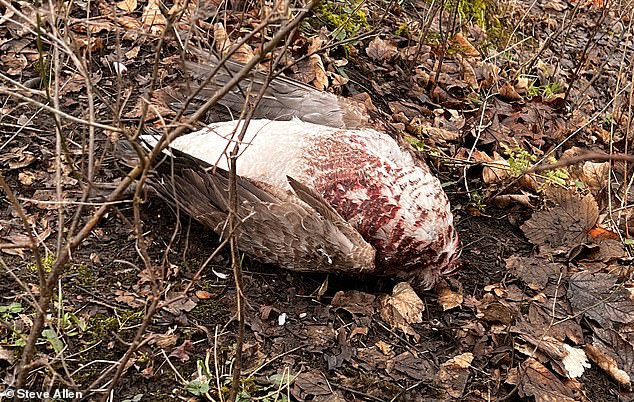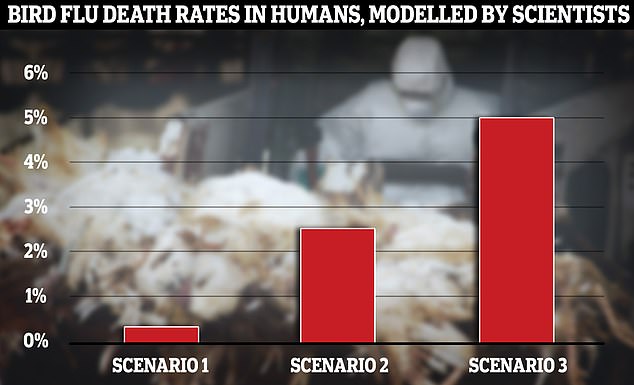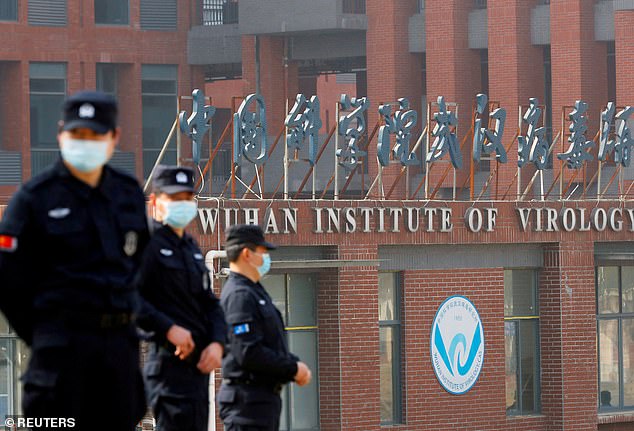Don’t visit wet markets this Lunar New Year, WHO tells travellers in Asia amid escalating bird flu pandemic fears
The World Health Organization (WHO) has urged travelers in Asia to avoid wet markets amid escalating fears of bird flu.
Virologists have repeatedly warned of the threat the markets pose, labeling them as ideal breeding grounds for pathogens.
A notorious site in the Chinese city of Wuhan is believed to have played a role in Covid’s murky origins.
In a new plea to coincide with the Lunar New Year, the WHO claimed that increased trade and travel will “lead to a higher risk of exposure” in people.
It comes just days after Beijing revealed the world’s first ever case of a new type of bird flu. A farmer in her 60s died after a two-week battle with the H10N5 strain.
Wet markets are large collections of open-air stalls where vendors flog live animals, raw meat and fish, as well as fruits and vegetables, herbs and spices. Experts have long warned of the increasing disease threat posed by such markets, labeling them as ideal conditions for the transmission of pathogens

According to the UKHSA, more than 700 confirmed cases of H5N1 have been detected in wild birds in England since September 2022. Pictured above: An outbreak of bird flu last February in Queens Park, Heywood, Rochdale

British scientists tasked with developing ‘early human transmission scenarios’ of bird flu have warned that 5 percent of infected people could die if the virus spreads to humans (shown under scenario three). In another scenario, the scientists assumed that 1 percent of those infected would be hospitalized and 0.25 percent would die – similar to how deadly Covid was in the fall of 2021 (scenario one). The other saw a mortality rate of 2.5 percent (scenario two)
And last year, a Chinese woman became the first person to ever die from the H3N8 strain.
Health officials believe she contracted the virus at a wet market, where live animals such as pangolins and bats are bought and sold.
A separate strain called H5N1, which experts have determined has pandemic potential in humans, has already fueled the world’s largest ever outbreak of bird flu.
More than 200 million domestic birds are affected worldwide, along with countless wild birds, as well as mammals such as minks, foxes, raccoons and bears.
In the warning, WHO officials said ‘most human infections to date have occurred sporadically after contact with infected poultry and/or their environment.
However, they added that “vigilance remains crucial.”
Avoiding contact with animals at live poultry markets and with sick or dead animals are among the recommended measures.
People should also avoid surfaces that appear to be contaminated with feces from poultry or other animals.
“Good hand hygiene” and “good food safety habits,” such as separating raw meat from cooked meat, were two final measures advised by officials.
A human is unlikely to contract the virus from eating poultry and game birds because it is heat sensitive, and cooking the poultry properly will kill the virus.
Common symptoms in humans include high fever, coughing, sore throat, muscle aches and a general feeling of malaise.
Like the common flu, the flu can quickly develop into serious respiratory illness and pneumonia.
According to the European Center for Disease Prevention and Control, the mortality rate from bird flu is believed to be around 50 percent worldwide.

Scientists have largely pointed to the Huanan wholesale seafood market in Wuhan (pictured), where numerous species of live animals were raised and sold, as the potential location where Covid naturally spread from animals to humans.

The WHO’s initial investigation in January 2021, in which a group of scientists traveled to Wuhan, concluded that “all hypotheses remain on the table.” In its March 2021 report, it ranked the likelihood of four theories, with the natural origins theory considered the most likely. But it put the lab leak an “extremely unlikely path” behind the frozen food origin story

It has been suggested that Covid was bioengineered at the Wuhan Institute of Virology (pictured) in central China, which specializes in studying coronaviruses
The Lunar New Year started on February 10 and lasts 15 days.
It comes as China has repeatedly emphasized that one of its wet markets, in Covid’s ground zero of Wuhan, was the source of the pandemic.
Scientists have largely pointed to the Huanan wholesale seafood market in Wuhan, where numerous species of live animals were raised and sold, as the potential location where the virus naturally spread from animals to humans.
Many of the first cases in December 2019 and January 2020 had visited the location where live animals were sold.
But Beijing has also been repeatedly accused of cover-ups and stifling efforts to investigate a laboratory Wuhan that experimented with similar viruses months before the disease emerged in the city.
No concrete evidence has been found to support Covid origin arguments, leading experts to fear that the truth behind the origins of the viruses may never be discovered.
